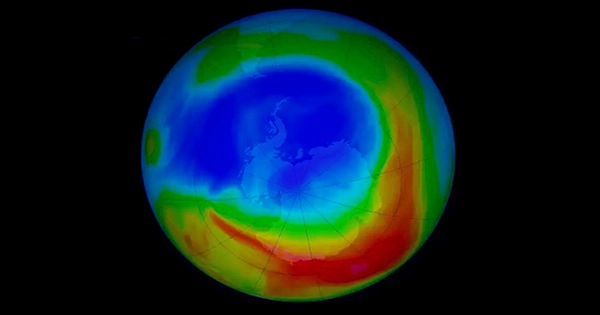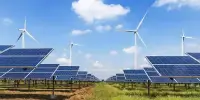According to European Space Agency scientists, the yearly hole in the ozone layer rose to a record extent in September.
But that’s not quite as horrible as it sounds. The ozone hole emerges about this time every year and varies in size owing to temperature and other atmospheric variables.
“Ozone isn’t just up there… some are created and some are destroyed on a regular basis,” said Stephen Montzka, head scientist for NOAA’s Global Monitoring Laboratory, in an interview with weather.com.
The ozone layer hole isn’t exactly a hole. Rather, it is a thinning of the atmosphere over Antarctica.
And it isn’t always present. The hole appears only during the arctic spring, which corresponds to autumn in the Northern Hemisphere.

All of this is due to the harsh weather and other circumstances that present over Antarctica. The cold, dark winter there enables for the formation of rare polar stratospheric clouds high in the atmosphere. They interact with ozone-depleting compounds, which are triggered by ultraviolet light after months of darkness.
“The stratosphere in the springtime over Antarctica is the coldest region of the stratosphere,” says Montzka. “It’s been isolated from the sun for the whole winter.”
Montzka stated that it is too early to determine the total magnitude of the hole this year. In September and October, it normally reaches its peak and then begins to decline.
According to European Space Agency scientists, the hole swelled to three times the size of Brazil in September, making it one of the largest on record at the time.
Some predicted that water vapor generated by the Hunga Tonga volcanic eruption in the western Pacific Ocean in January 2022 will cause the ozone hole to be greater than usual this year.
Year after year, the ozone layer remains on course for full recovery within the next several decades, according to Montzka.
Scientists initially became aware of the ozone hole in the 1970s and 1980s. It was connected to pollution caused by the use of chlorofluorocarbons, or CFCs, in air conditioning, refrigerants, and other applications. CFCs were outlawed by the Montreal Protocol in 1987, but they are still present in our environment.
The Global Monitoring Lab monitors the ozone layer to ensure that countries follow the Montreal Protocol, which is regarded as the most effective agreement of its kind.
“Ozone is fairly important because it filters out high energy UV light from the sun that if that layer wasn’t there, life on Earth wouldn’t exist as we know it today,” Montzka said in a statement.
Jan Childs, a reporter for Weather.com, covers breaking news and features about weather, space, climate change, the environment, and everything in between.
















